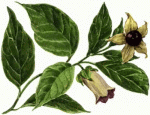Botany
|
21 december 2014 05:34:23 |
| Side-effects of domestication: cultivated legume seeds contain similar tocopherols and fatty acids but less carotenoids than their wild counterparts (BMC Plant Biology) |
|
Tweet Background:
Lipophilic antioxidants play dual key roles in edible seeds (i) as preservatives of cell integrity and seed viability by preventing the oxidation of fats, and (ii) as essential nutrients for human and animal life stock. It has been well documented that plant domestication and post-domestication evolution frequently resulted in increased seed size and palatability, and reduced seed dormancy. Nevertheless, and surprisingly, it is poorly understood how agricultural selection and cultivation affected the physiological fitness and the nutritional quality of seeds. Fabaceae have the greatest number of crop species of all plant families, and most of them are cultivated for their highly nutritious edible seeds. Here, we evaluate whether evolution of plants under cultivation has altered the integrated system formed by membranes (fatty acids) and lipophilic antioxidants (carotenoids and tocopherols), in the ten most economically important grain legumes and their closest wild relatives, i.e.: Arachis(peanut), Cicer(chickpea), Glycine(soybean), Lathyrus(vetch), Lens(lentil), Lupinus(lupin), Phaseolus(bean), Pisum(pea), Vicia(faba bean) and Vigna(cowpea).
Results:
Unexpectedly, we found that following domestication, the contents of carotenoids, including lutein and zeaxanthin, decreased in all ten species (total carotenoid content decreased 48% in average). Furthermore, the composition of carotenoids changed, whereby some carotenoids were lost in most of the crops. An undirected change in the contents of tocopherols and fatty acids was found, with contents increasing in some species and decreasing in others, independently of the changes in carotenoids. In some species, polyunsaturated fatty acids (linolenic acid especially), ?-tocopherol and ?-tocopherol decreased following domestication.
Conclusions:
The changes in carotenoids, tocopherols and fatty acids are likely side-effects of the selection for other desired traits such as the loss of seed dormancy and dispersal mechanisms, and selection for seed storability and taste. This work may serve as baseline to broaden our knowledge on the integrated changes on crop fitness and nutritional quality following domestication. |
| 123 viewsCategory: Botany |
 Exploiting transcriptome data for the development and characterization of gene-based SSR markers related to cold tolerance in oil palm ( Elaeis guineensis ) (BMC Plant Biology) Exploiting transcriptome data for the development and characterization of gene-based SSR markers related to cold tolerance in oil palm ( Elaeis guineensis ) (BMC Plant Biology)Silencing of omega-5 gliadins in transgenic wheat eliminates a major source of environmental variability and improves dough mixing properties of flour (BMC Plant Biology) 
|
| blog comments powered by Disqus |
MyJournals.org
The latest issues of all your favorite science journals on one page
The latest issues of all your favorite science journals on one page



